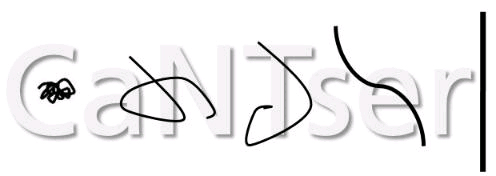
CaNTser – Investigating the toxic potential of carbon nanotubes after long-term inhalation
Research in the last few years has clearly demonstrated that carbon nanotubes have different toxic properties depending the individual CNT structure. Carbon nanotubes with a short or convoluted morphology cause only minor toxic effects, which correspond well to particles without specific toxicity. In contrast, results of the BMBF-funded project CarboTox (2010 – 2013) indicated that long and fibrous CNTs could cause tumour-inducing effects similar to asbestos. Since this hypothesis might have far-reaching consequences for humans, a scientific investigation is urgently needed to either prove or disprove that carbon nanotubes are able to initiate asbestos-like cancer formation in humans upon inhalation
The main objective of the project CaNTser is therefore to examine the tumour-causing effects of fibre-like CNTs after inhalation, to detect a possible mechanism of action and possibly derive a threshold value.
Further investigations have shown that the toxicity and probably also the tumour formation of carbon nanotubes depends strongly on the different CNT modifications (length, diameter, curvature, surface properties)as well as on the separating / caking properties. Therefore, short-term screening methods are applied to determine in vitro and in vivo the characteristics of those carbon nanotubes, which cause, potentiate or weaken the toxic and thereon-based carcinogenic effects
Another important goal of the CaNTser project is to overcome the challenge to specifically control the synthesis of carbon nanotubes in order to generate either straight or curved carbon nanotubes, which are required for the different biological assays and endpoints. This will be achieved by controlling the defect density of the CNTs, which requires an accurate and reproducible procedure of the synthesis process.
Grant Number: BMBF - FKZ 03XP0016
Duration: 01.07.2015 - 31.12.2018
Project Lead
Project Partners
Publications
2017
- Eckert, V.; Büchner, B.; Leonhardt, A.; Reamon-Bütthner, S.; Ziemann, C.; Schaudien, D. (2017). Synthesis of tailormade multi-walled carbon nanotubes with different morphologies for toxicological studies. NanoToday, 06.-10. Dezember 2017, Kona, USA. [Poster]
- Eckert, V.; Büchner, B.; Leonhardt, A. (2017). Herstellung und Untersuchung von Kohlenstoffnanoröhren unterschiedlicher Morphologien. NanoCare, 04.-05. Mai 2017, Karlsruhe, Deutschland. [Oral]
- Eckert, V.; Büchner, B.; Leonhardt, A. (2017). Herstellung von Kohlenstoffnanoröhren mit unterschiedlichen Morphologien für toxikologische Untersuchungen. NanoCare, 04.-05. Mai 2017, Karlsruhe, Deutschland. [Poster]
2016
- Eckert, V.; Fuge, R.; Büchner, B.; Leonhardt, A. (2016). Untersuchung der morphologischen Eigenschaften von undotierten sowie N-dotierten mehrwandigen Kohlenstoffnanoröhren hinsichtlich ihrer Steifigkeit. NanoCare, 03.-04. Mai 2016, Frankfurt, Deutschland. [Poster]
- Eckert, V.; Fuge, R.; Büchner, B.; Leonhardt, A. (2016). Investigation of the morphological properties of pristine and N-doped multi-walled carbon nanotubes regarding their straightness. ChemOnTubes, 03.-07. April 2016, Brüssel, Belgien. [Poster]
- Eckert, V.; Fuge, R.; Büchner, B.; Leonhardt, A. (2016). Morphological properties of pristine and N-doped multi-walled carbon nanotubes. NanoCarbon, 23.-24. Februar 2016, Würzburg, Deutschland. [Poster]
 >
>